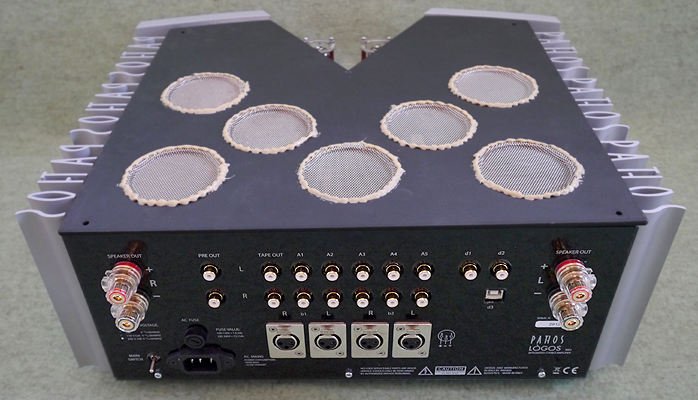This review page is supported in part by the sponsors whose ad banners are displayed below |
 |
 |
Arrival. One difference between newbs and veterans in this sector is packaging. The former skimp to 'save' money which bites you and them on the arse when product shows up damaged; or the packaging can't ever be reused. Veterans accept that proper packaging will cost more than a pair of tweeters in a speaker or perhaps all your luxo socketry combined if you're an amp maker. The Logos MkII didn't skimp. It arrived triple-boxed and then some. It was properly battle-hardened to take on Oops, FedUp and the usual suspects.
|
 |
|
Response to the la bella vida cosmetics could be divided. Ivette found them vulgar in the extreme. The fact that the heat sinks spell out the company name three times over per side became yet further vanity indictment. There's no question. The looks are opulent and highly stylized. Hence reactions won't be lukewarm. I bet that those who are bored to tears with our usual folded sheet-metal boxes will adore the Logos MkII and give it extra marks for its haute couture threads. Part and parcel of the stylized approach is total lack of indicators on the remote's six silvery buttons. You want chic, you can't have pedestrian markers. Better learn your magic wand spells to control volume and set mute, inputs, standby and display brightness.
|
|
|
Volume maxes out at 99, inputs display as A1-5 for analog, b1-2 for balanced and d1-3 for digital (if you've bought the binary module).
|
 |
The volume barrel isn't a continuously rotating affair but limits its mechanical range to precisely the width of its front baffle opening.
|
 |
To increase the remote's capture window, it relies on two IR emitters.
|
 |
|
|
|
Popping the bonnet and flipping it upside down reveals how the Italians have fixed their metal-mesh cooling vents.
|
 |
The business end sports, on RCA, a preout, tape-out and five line-level sources plus two coaxial digital inputs. Then there are two inputs on XLR, a 24/192 USB , a single pair of shrouded and slotted speaker terminals plus a toggle for the mains and the usual IEC power inlet with fuse holder above.
|
 |
  |
 |